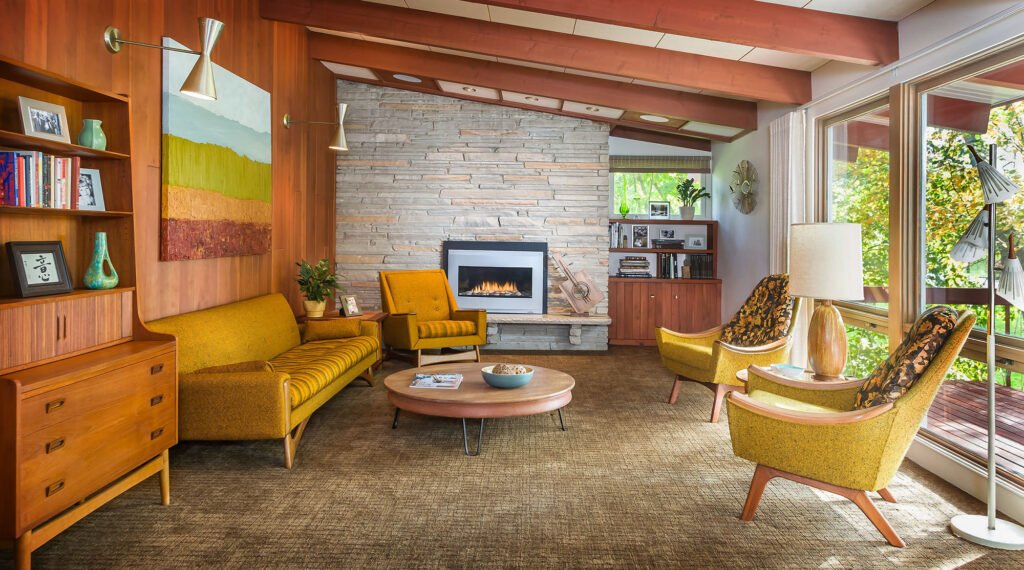
Trends come and go, but some styles stand the test of time. One such style is Mid-Century Modern, which emerged in the mid-20th century and continues to captivate homeowners and designers alike with its timeless appeal. In this article, we will delve into the essence of Mid-Century Modern furniture, its origins, key characteristics, and why it remains a beloved choice for interior enthusiasts.
Origins of Mid-Century Modern
Mid-Century Modern design emerged in the post-World War II era, primarily between the 1940s and 1960s. This design movement was a response to the ornate and heavily ornamented styles that dominated the pre-war period. It represented a fresh, minimalist, and functional approach to interior design and furniture. Influenced by the Bauhaus movement, Scandinavian design, and American innovation, Mid-Century Modern was a fusion of form and function.
Key Characteristics
Clean Lines and Minimalism: One of the defining features of Mid-Century Modern furniture is its clean, sleek lines. These pieces often have a minimalist appearance, devoid of unnecessary ornamentation. The emphasis is on simplicity, making them visually appealing and versatile.
Organic Shapes: Mid-Century Modern furniture frequently incorporates organic and geometric shapes. From the iconic Eames Lounge Chair with its curvaceous form to the tulip-shaped Saarinen Dining Table, these designs blur the lines between art and function.
Quality Materials: Craftsmanship and quality materials are at the core of Mid-Century Modern furniture. Designers favored materials like teak, rosewood, walnut, and leather. These materials not only exude a sense of luxury but also age gracefully, further enhancing their value.
Functionality: Functionality is paramount in Mid-Century Modern design. Furniture pieces are often designed with multiple uses in mind. For example, storage solutions are seamlessly integrated into pieces like credenzas and coffee tables.
Iconic Pieces: Mid-Century Modern boasts a plethora of iconic furniture pieces that have become timeless classics. The Eames Lounge Chair and Ottoman, Arne Jacobsen’s Egg Chair, and the Barcelona Chair by Ludwig Mies van der Rohe are just a few examples of these enduring designs.
Why Mid-Century Modern Endures
Timeless Aesthetic: The enduring popularity of Mid-Century Modern furniture can be attributed to its timeless aesthetic. Its clean lines and organic shapes have a universal appeal that fits into a variety of interior styles, from contemporary to eclectic.
Versatility: Mid-Century Modern pieces are incredibly versatile. They can serve as statement pieces in a room or seamlessly blend into an existing décor scheme. This adaptability makes them a favorite among interior designers.
Sustainability: In an era where sustainability is a growing concern, Mid-Century Modern furniture has an advantage. Many of the materials used in its construction, such as solid wood, are sustainable, and the durable craftsmanship ensures these pieces last for generations.
Nostalgia: For some, Mid-Century Modern furniture carries a sense of nostalgia, reminding them of a simpler, more optimistic time. This emotional connection further contributes to its enduring appeal.
Conclusion
Mid-Century Modern furniture has proven itself as more than just a design trend; it’s a design movement that continues to inspire and captivate. Its timeless aesthetics, functional designs, and focus on quality materials have solidified its place in the world of interior design. Whether you’re a fan of its clean lines, iconic pieces, or the nostalgic charm it evokes, Mid-Century Modern furniture remains a testament to the enduring power of good design. So, if you’re considering a furniture upgrade, don’t be surprised if you find yourself gravitating towards the allure of Mid-Century Modern classics.



